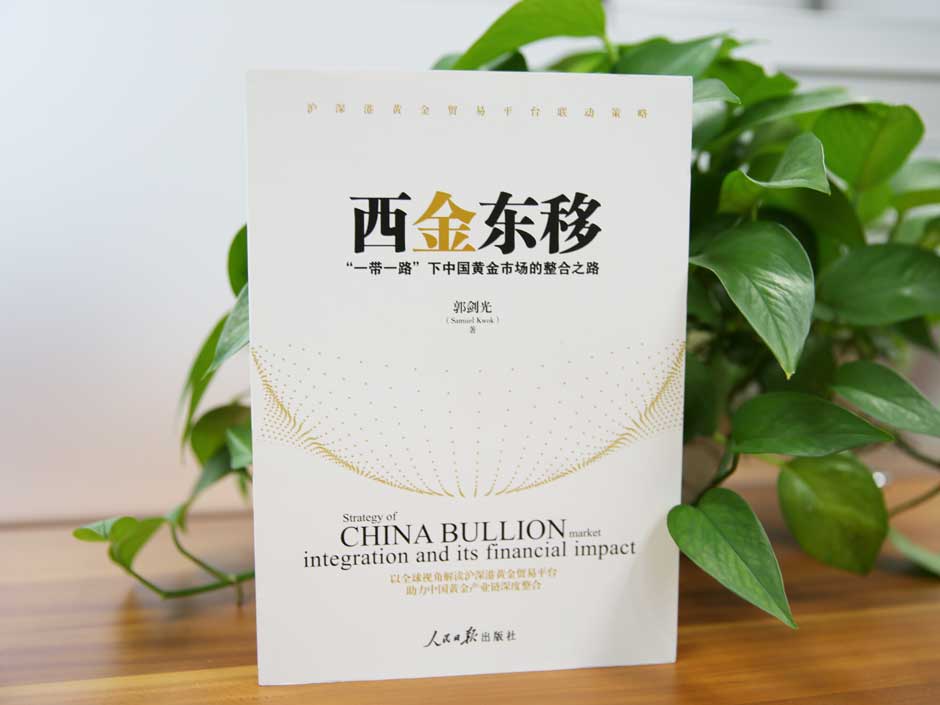09 Oct 2017
According to the data provided by the World Gold Council 2015 and China Gold Association, China continued to become the world's largest bullion market in 2014, accounting for about one third of the global bullion market demand. China's gold demand is expected to increase by at least 20 percent by the end of 2017.
In recent years, with the transfer of the world gold rights centre, gold continues to flow into China, India and other developing countries and the demand for gold has shifted to South and East Asia regions, including India and China.
Dr Samuel Kwok from International Business School Suzhou at Xi’an Jiaotong-Liverpool University believes that with the trend of gold rapidly moved from the Western to Asian market, China as the biggest standalone market on the consumption and investment of gold is having a more important role on the pricing of the gold product.
Combined with the bullion trading platform in Shanghai, Shenzhen and Hong Kong, Dr Kwok analysed the Chinese bullion market integration and international gold pricing strategy in his book Strategy of China Bullion Market Integration and Its Financial Impact.

He conducted a survey with more than 200 managers from gold jewelry manufacturing and retail enterprises in Hong Kong and Shenzhen and found that the Chinese bullion market has developed rapidly in recent years. This has produced some confusing and challenging problems for gold enterprises as China is the country with the highest gold demand, however, it does not have the pricing power, the gold industries and trading platforms are separated and gold import procedures are relatively time-consuming.
Dr Kwok said: “These problems have led to a higher cost than the international average for enterprises, logistics costs or the cost of buying gold itself. Therefore, with the trend of gold rapidly moving from the Western to Asian market, it is essential to integrate gold markets and seek breakthroughs and innovation in gold production.
“At the same time, the cost of gold for enterprises will reduce if China has gold pricing power and it will serve China's real economy.”
Regarding these challenges, Dr Kwok proposes that the domestic gold industry should be integrated through following the model of Qianhai, Shenzhen.
"The future operation will integrate gold delivery, settlement of accounts and storage as a whole. It will be an offshore gold and silver delivery service centre using Hong Kong as a trading platform, registered with Shanghai Gold Exchange, delivered in Qianhai bonded warehouse and accounts settled through offshore accounts," continued Dr Kwok.

In the opinion of Dr Kwok, the service centre set up in Qianhai will greatly decrease delivery and transport time and effectively reduce the cost of gold for enterprises requiring gold.
This model can also make full use of the advantages of Hong Kong’s position as the world major international gold market with its more internationalised operations and mature experience. This will greatly attract international customers to participate in the bullion market in Qianhai, Shenzhen.
In addition, a large number of offshore RMB (CNH) deposits will be generated based on this new model and also activate the CNH market. “This could increase and accelerate the trading volume in the Qianhai gold and silver exchange, lead to large growth, promote exchange interaction among onshore RMB (CNY), CNH and USD, realise the parity theory of exchange rate and interest rate, promote the development of the China gold industry and perfect China gold pricing mechanism, expand the RMB value and settlement in international gold trading, accelerate the internationalisation of RMB,” said Dr. Kwok.
“With the gold delivery warehouse and supporting system in Qianhai and the mature and active international market in Hong Kong, Shen Zhen-Hong Kong region will have the ability to have a direct impact on Southeast Asia, and other ‘Belt and Road’ Asian countries, including Malaysia, Indonesia and Burma," added Dr Kwok.
John Hung, partner of Deloitte China, said: "The Chinese gold industry is rapidly developing as the ideal process of globalisation of the Chinese economy and RMB and plays an important role in the world gold supply, demand and pricing. Dr Kwok has described in his book and given very professional analysis about the causes of this change, development and influence in the future."
Zhenlu Chen, CEO of Association of International Accountants China representative office, states that Strategy of China Bullion Market Integration and Its Financial Impact is an analysis and the prospect of integrating the China gold market.
(translator: Yanzi Wu, editors: Guojuan Wang & Jacqueline Bánki, photos by Xiaoxi Zhao)
09 Oct 2017







